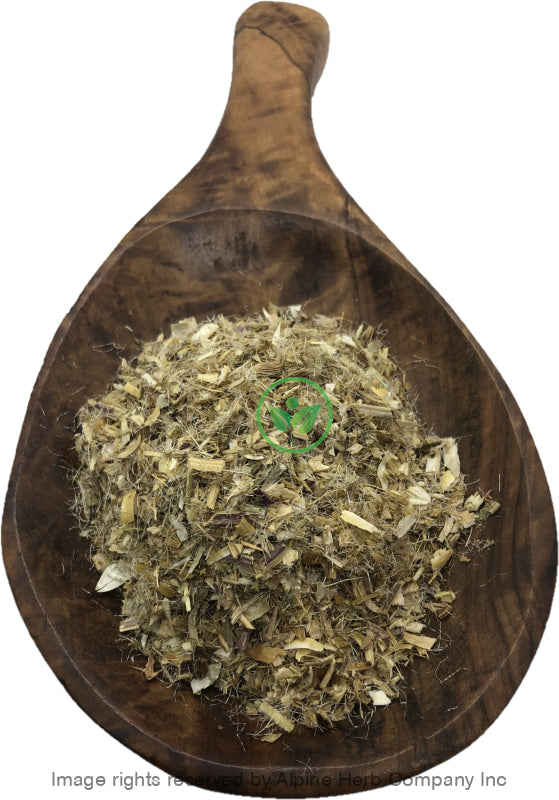Blessed Thistle Herb Cut Alpine Herb Company Inc.
$ 11,49 $ 6,89
Botanical Name: Centaurea benedicta
Common Name:
- English: Holy thistle, Lady’s thistle
- Also, known as: Carduus, St. Benedict’s thistle, Cardin, Blessed cardus, Bitter thistle, Spotted thistle
Habitat: Europe
Origin: Hungary
Harvested: Cultivated
Parts Used: Plant
General Information:
Blessed thistle leaves, stems, and flowers have been traditionally used in bitter tonic drinks and in other preparation taken by mouth to enhance appetite and digestion. Being indigenous to Asia and Europe, Blessed thistle is specially raised across the globe including the USA. This is an annual plant and grows up to 2-3 feet in height. The straight stems are a brown color and covered with fuzz. The leaves are lanceolate. The plant blossoms from the end of spring through summer, when it’s covered with multiple yellow flowers, appearing at the top of the plant. The leaves have a very bitter and slightly nauseous taste and a feeble odor. Cold water extracts only a portion of their properties, but boiling water acts on them fully and forms an intensely bitter decoction. By treatment with acids, they yield a neutral principle called niacin, which is crystallized, without odor, soluble in alcohol, sparingly soluble in boiling water, with a bitter character, resembling a solution.
How to use:
Hot Infusion:
The basic method for dried herbs and flower is, take 2-3 tablespoons of dried herb in a cup or teapot. Pour hot water over it and cover it with lid for 10-30 minutes. Hot water is needed to draw out the antioxidants, enzymes, vitamins, flavonoids and volatile oils from the botanicals. Strain and squeeze out as much as liquid as possible and enjoy!
Tips:
- You can sweeten your herbal tea with a bit of honey, natural fruit juice, stevia leaves powder and or licorice root powder.
- You can make ice cubes or pops by freezing tea in ice tray or pop molds.
Precautions:
You should consult with a qualified healthcare practitioner before using any herbal products, particularly if you are pregnant, nursing, or on any medications.
All information on this website is for educational purpose ONLY
This information has not been evaluated by Health Canada.
This information is not intended to diagnose, treat, cure, or prevent any disease.
| Unit Size | 100g, 200g, 400g, 1kg |
|---|
Prompt shipping and expert packing
Thanks to our longstanding association with UPS FedEx DHL as well as other leading global carriers, we can offer a variety shipping options. Our warehouse staff is highly trained and will be able to pack your goods in accordance with our precise and exact specifications. Your items will go through an exhaustive examination before they will be securely packaged before being delivered. We ship to hundreds of thousands of customers daily in different countries. This is a sign of our determination to become the largest online retailer worldwide. Warehouses and distribution centers are located throughout Europe as well as in the USA.
Note that orders containing multiple items are processed according to the particular item.
We will thoroughly inspect all items ordered before shipping. Most orders are shipped within 48 hours. The delivery time will be between 3 and 7 working days.
Returns
The stock market is always changing. It's not entirely managed by us since we're involved with several entities, including the factory and the storage. Therefore, the actual inventory could fluctuate at any moment. Please be aware that it is possible that your order could be out of stock after you've placed your order.
Our policy lasts for 30 days. If it's been more than 30 days since the date you purchased your item We're sorry to say that we can't offer you a full exchange or refund.
You can only return a product if it is unused and still in the same state as when you received it. The item should be in the original packaging.


































